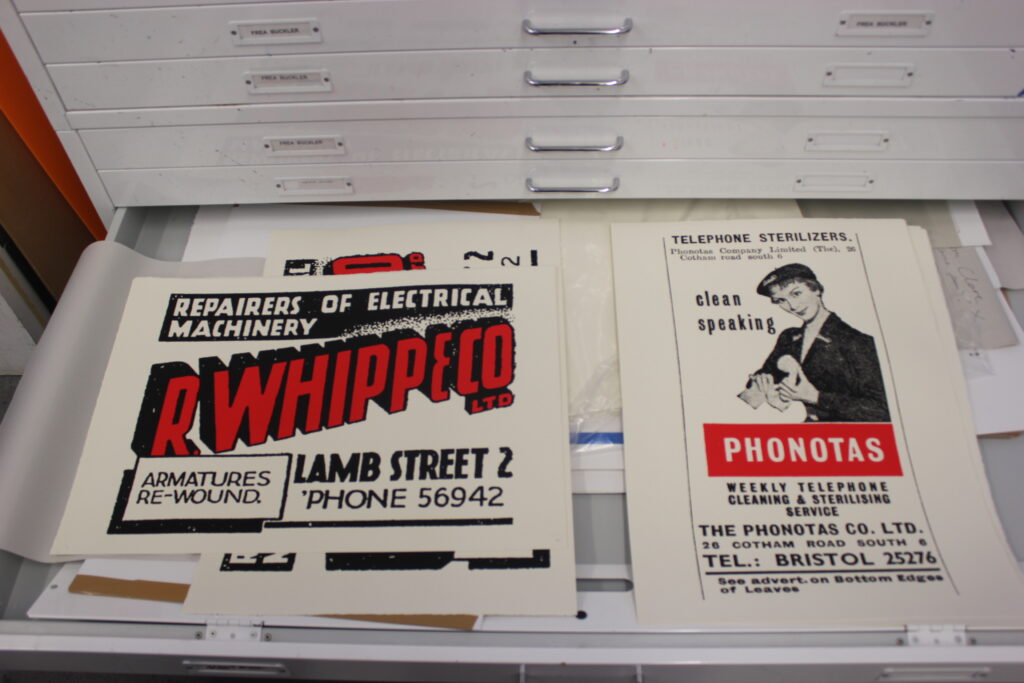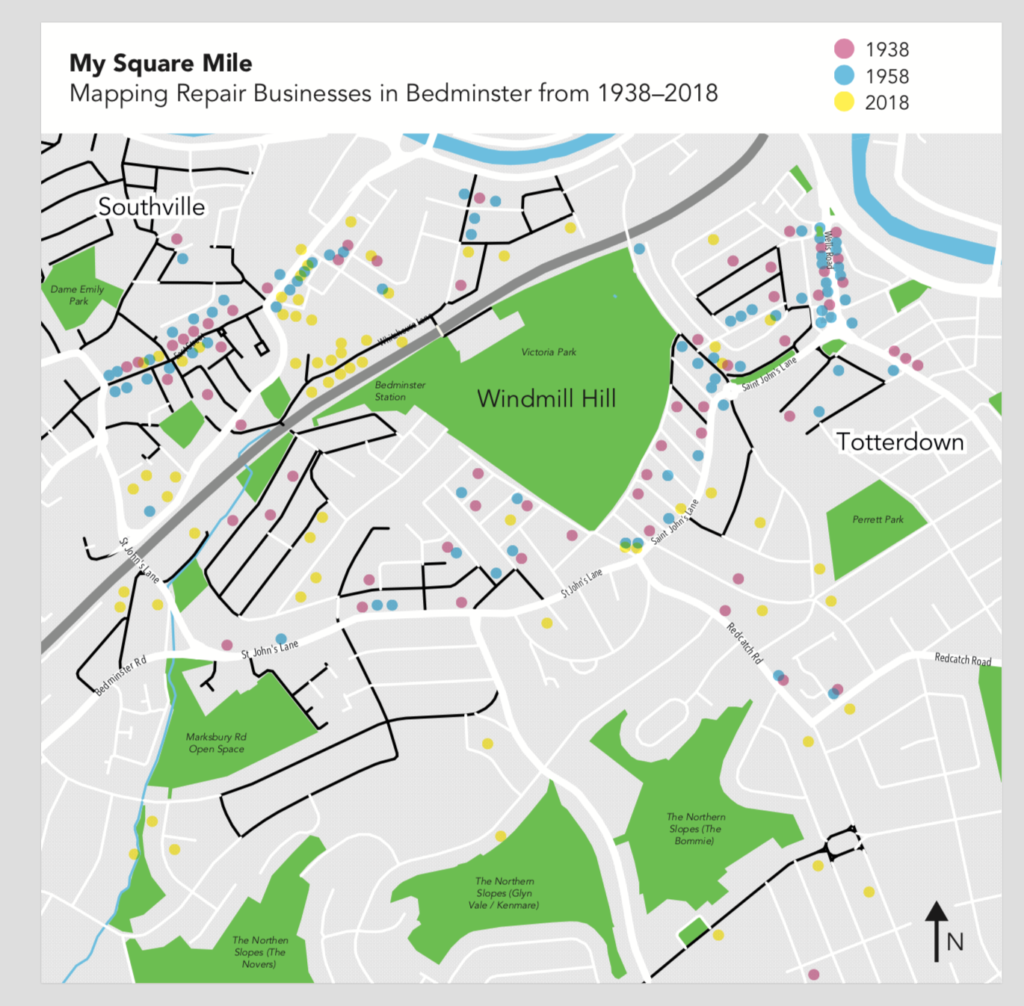Background
My Square Mile grew out of an interest in documenting local repair practices and economies and the histories of repair business. In relation to consumption patterns, post World War 2 brought many changes from new innovations, household electronics, to the growth of youth and throw-away cultures. It is for this reason that the timeframe 1938-2018 was explored with the square mile being established in our local living area in south Bristol (covering in part Victoria Park, East and North Street).
Approach
Drawing on fire insurance archival data, business directories and local library resources a brief overview of the types of repair business across five periods (1938, 1958, 1978, 1998, 2018) was created. Information on the location, type of business and repairs offered were categorised and mapped, with a focus on electronic repairs. The findings indicate a significant decrease in businesses dealing with the repair and maintenance of clothes, boots and shoes. With bicycle repair and metal work businesses (blacksmith, smelters and scrap merchants) disappearing, the number of electrical repair businesses actually increases. This is reflected in part by the number of high street stores now dealing with basic mobile phones fixes and upgrades. As well as changes in consumption patterns with declines in radio, TV and video repair being the most significant and the increase in general domestic appliances, such as washing machines and dishwashers increasing post 1958. The distribution of businesses also reflects changes in neighborhood centers’ such as Totterdown and Bedminister.
Work Generated
These findings illustrate not just changes in the types of repair business but where they were situated. From this we can begin to infer how proximity, accessibility and the visibility of businesses dealing with the repair and maintenance of goods plays an important role in understanding, how we value materials. While the presence of such business practices address more broadly how we may achieve UN sustainable goals relating to responsible consumption and production and viable cities.
Accompanying the research a selection of repair business adverts with selected, re-worked and screen printed. This visual exploration highlighted the languages, aesthetics, trades signifiers and symbolises that accompanies repair business across the decades.
Team
Teresa Dillon (Principle Investigator), Carmela Pietrangleo (research assistant), Arthur Buxton (screen prints) and City Edition Studio (graphics).
Supported by
University of the West of England, Research Collaboration Grant.

